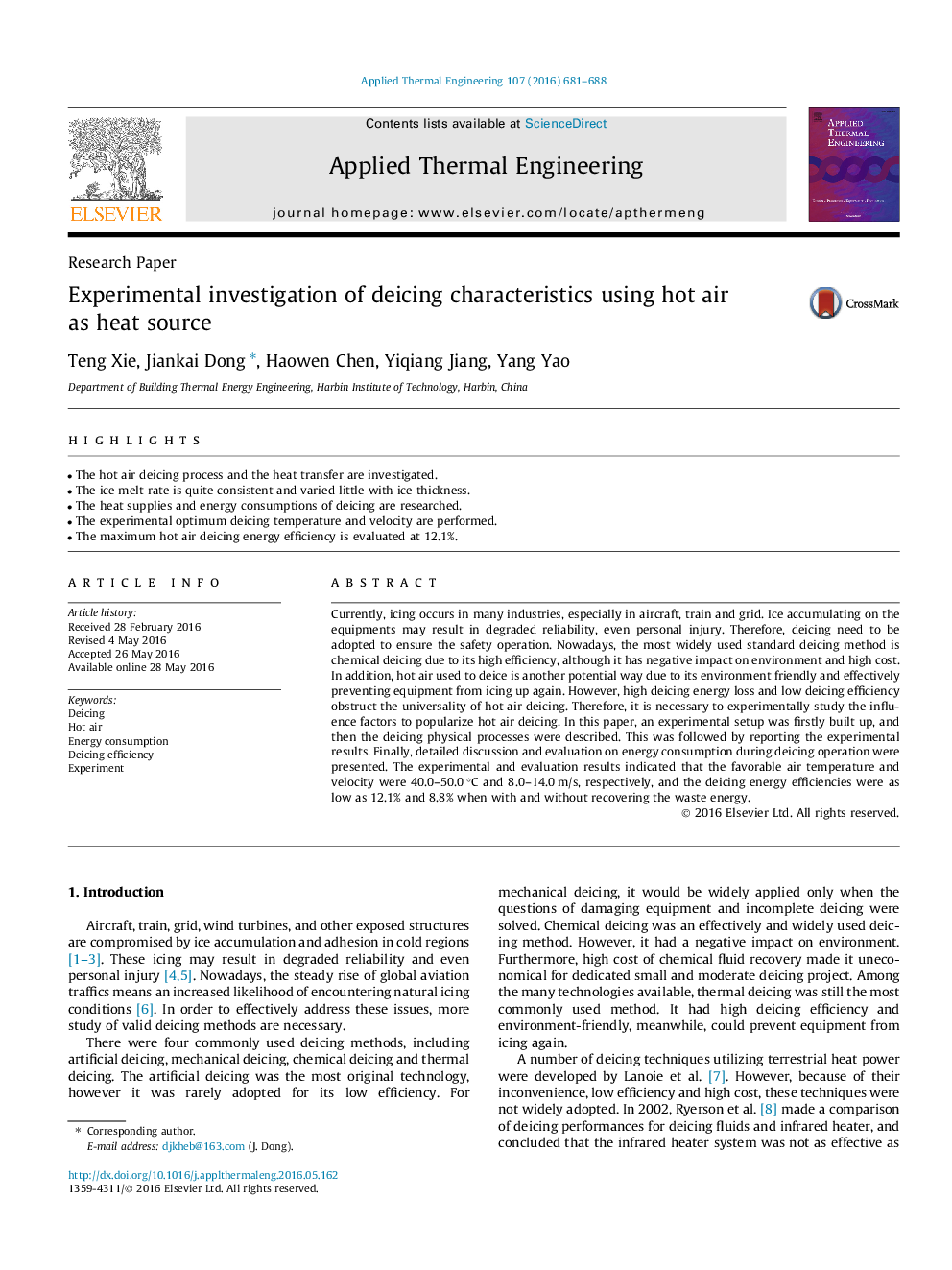| Article ID | Journal | Published Year | Pages | File Type |
|---|---|---|---|---|
| 7047253 | Applied Thermal Engineering | 2016 | 8 Pages |
Abstract
Currently, icing occurs in many industries, especially in aircraft, train and grid. Ice accumulating on the equipments may result in degraded reliability, even personal injury. Therefore, deicing need to be adopted to ensure the safety operation. Nowadays, the most widely used standard deicing method is chemical deicing due to its high efficiency, although it has negative impact on environment and high cost. In addition, hot air used to deice is another potential way due to its environment friendly and effectively preventing equipment from icing up again. However, high deicing energy loss and low deicing efficiency obstruct the universality of hot air deicing. Therefore, it is necessary to experimentally study the influence factors to popularize hot air deicing. In this paper, an experimental setup was firstly built up, and then the deicing physical processes were described. This was followed by reporting the experimental results. Finally, detailed discussion and evaluation on energy consumption during deicing operation were presented. The experimental and evaluation results indicated that the favorable air temperature and velocity were 40.0-50.0 °C and 8.0-14.0 m/s, respectively, and the deicing energy efficiencies were as low as 12.1% and 8.8% when with and without recovering the waste energy.
Related Topics
Physical Sciences and Engineering
Chemical Engineering
Fluid Flow and Transfer Processes
Authors
Teng Xie, Jiankai Dong, Haowen Chen, Yiqiang Jiang, Yang Yao,
